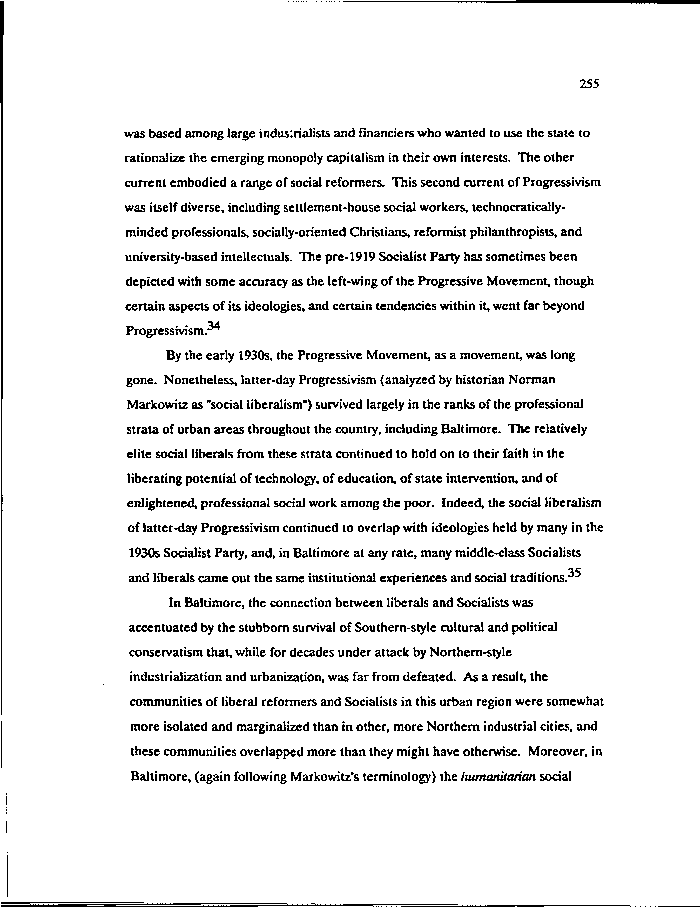|
255
was based among large induslrialists and financiers who wanted to use the state to
rationalize the emerging monopoly capitalism in their own interests. The other
current embodied a range of social reformers. This second current of Progressivism
was itself diverse, including settlement-house social workers, technocratically-
minded professionals, socially-oriented Christians, reformist philanthropists, and
university-based intellectuals. The pre-1919 Socialist Party has sometimes been
depicted with some accuracy as the left-wing of the Progressive Movement, though
certain aspects of its ideologies, and certain tendencies within it, went far beyond
Progressivism.
By the early 1930s, the Progressive Movement, as a movement, was long
gone. Nonetheless, latter-day Progressivism (analyzed by historian Norman
Markowitz as "social liberalism") survived largely in the ranks of the professional
strata of urban areas throughout the country, including Baltimore. The relatively
elite soda! liberals from these strata continued to hold on to their faith in the
liberating potential of technology, of education, of state intervention, and of
enlightened, professional social work among the poor. Indeed, the social liberalism
of latter-day Progressivism continued to overlap with ideologies held by many in the
1930s Socialist Party, and, in Baltimore at any rate, many middle-class Socialists
and liberals came out the same institutional experiences and social traditions.
In Baltimore, the connection between liberals and Socialists was
accentuated by the stubborn survival of Southern-style cultural and political
conservatism that, while for decades under attack by Northern-style
industrialization and urbanization, was far from defeated. As a result, the
communities of liberal reformers and Socialists in this urban region were somewhat
more isolated and marginalized than in other, more Northern industrial cities, and
these communities overlapped more than they might have otherwise. Moreover, in
Baltimore, (again following Markowitz's terminology) the humanitarian social
|

